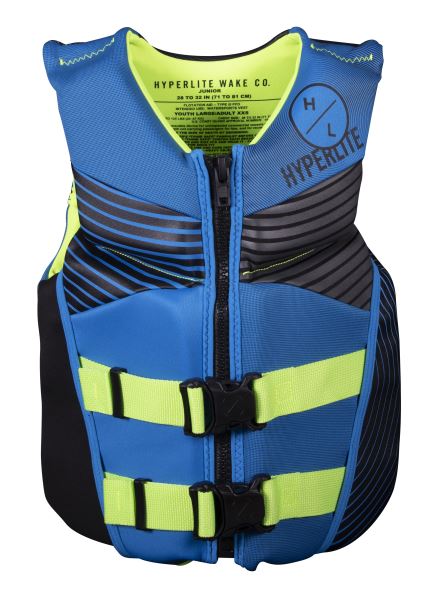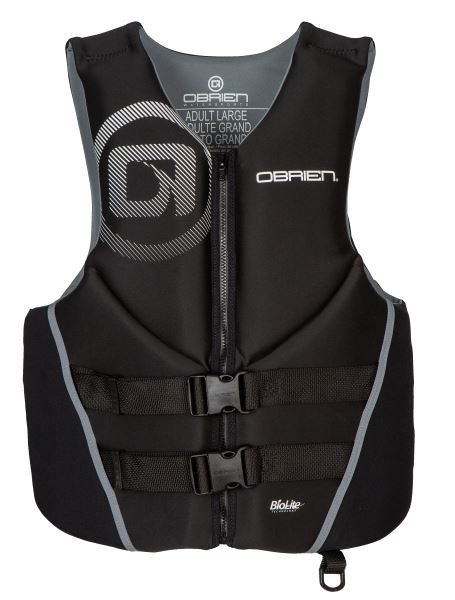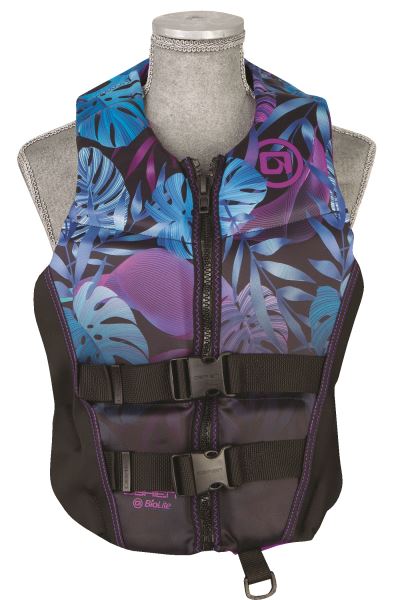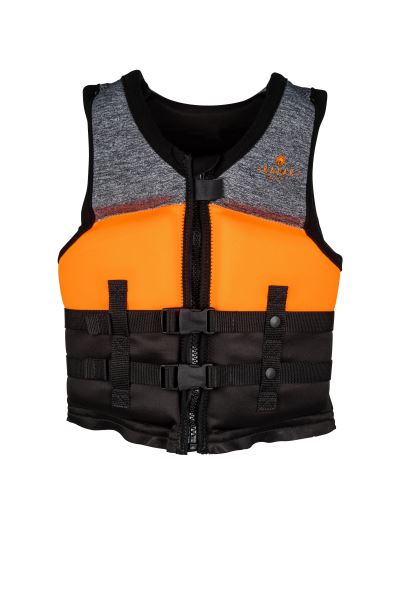We've all been there. After months of coaxing your neighbors to spend a day with you on your boat, they finally free up some time and agree to join you. You have plenty of food and drinks and you even compiled the perfect songs for your boating jams playlist. Everything is all set until you realize... you don't have enough life jackets for everyone. Arguably the most important item for a safe day on the water is missing. What do you do? Well, you buy some, of course, but that's easier said than done.
What type should you get? What size? And heck, what does this USCG approved tag even mean? With the help of bestboatingtips.com we've compiled a quick overview of everything you need to understand when shopping for personal flotation devices (PFDs).
 Life Jacket Types
Life Jacket Types
There are three main types of life jackets you’ll come across when shopping. The standard type is the kind most people think of when picturing life jackets. They are still the most commonly used for recreational activities and for good reason. They're inexpensive and do the job well. Standard life jackets usually come in a vest-like design and are made of a buoyant material, like foam. The only downside you'll experience with standard life jackets can be overall comfort. They can be hot and offer little in the way of maneuverability. They're like your favorite pair of underwear. They get the job done, but when your spouse finally sees them, there won't be any fireworks. That's where the next type excels.
If you want to impress your friends and family, purchase inflatable designed PFDs. These rely on CO2 cartridges that automatically expand when submerged or when you pull that tab that allows the user to float. They are much less restrictive than standard PFDs and are gaining popularity. They have a lightweight design and are a great option to keep you safe in case you accidentally fall into the water. They do require a little maintenance compared to a standard life jacket however, since you must check the air canister regularly to make sure it works properly if needed.
The last type of life jacket is the hybrid design. These are, just as they sound, a mix between standard and inflatable ones. They are the most expensive type of PFD, offering both the comfort of an inflatable design while keeping the practicality of the standard life jacket.
PFD Classification
The United States Coast Guard has classified all approved PFDs into five different categories based on several metrics including buoyancy, use type, and design. In order to be USCG approved, a life jacket must meet all standards to fit into one of these categories.
 Type I: Off-Shore Life Jackets
Type I: Off-Shore Life Jackets
Type I PFDs are the most buoyant and are normally used for rough or remote waters where rescue may take a while. They are designed to keep a person in the up-right position even when unconscious and tend to be pretty bulky. These are the type of life jackets you normally see on commercial vessels such as cruises.
Type II: Near-Shore Buoyant Vests
The next type of PFD is Type II. It is intended for calmer waters where rescue is likely to come quickly. These flotation devices are less bulky than the previous type, making them more comfortable to wear, but that comes at the cost of buoyancy. They come in many different types of design including standard, inflatable and hybrid.
Type III: Flotation Aids
This type of PFD is specifically designed to aid individuals by giving them more buoyancy, but it is not designed to keep unconscious people above water like the previous two. They are a great option for recreational activities where rescue may come immediately or not be needed at all. They are meant to be very comfortable and offer freedom of movement. These tend to be the popular choice among kayakers and fishermen.
Type IV: Throwable Devices
This type of PFD is meant to be thrown to an individual in the water and is best used along with a wearable flotation device. They should not be used in place of a life jacket. An example of a Type IV PFD is a life ring.
Type V: Special Use Devices
The final category of PFD is the special use device. These are intended for specific activities such as waterskiing, kayaking and windsurfing. These must be worn at all times and only used for the activity mentioned on the device’s label.
 Life Jacket Sizing
Life Jacket Sizing
When determining the proper size for your life jacket you should primarily base your choice on chest size at its broadest point. When measuring, make sure to measure under the arms and around the chest. After you’ve found the chest size, use the life jacket’s manufacturer’s size guide to determine which size is best.
It is best to try different life jackets on before making the purchase. When trying on a life jacket, make sure to wear the clothing you’d be wearing on the water. Check to make sure it fits snugly without restricting your range of motion. If it feels hot in the store it's going to feel even hotter on the water, so look for another one. Try to mimic some of the activities you’ll be doing in your life jacket to make sure it doesn’t hinder you. If you’re going to be fishing, pretend to cast a rod or bait a hook. Don't worry about what people around you think. If anything, just tell them there's a bee buzzing around your head and warn them not to come too close.
 Kid Sizing
Kid Sizing
Unlike adult sizing, life jackets for children are based on the child’s weight not chest size. There are three main sizes for children’s life jackets: infant, 8-30 pounds; child, 30-50 pounds; and youth, 50-90 pounds.
When having a child try on life jackets, use all of the same techniques as the previous section. It also helps to lift them up by the shoulder straps and ensure the child’s head does not slide down into the life jacket. If you notice this happening, the life jacket should be tightened or is too big. One of the biggest mistakes you can make is to buy a life jacket too big that your child “can grow into.”

